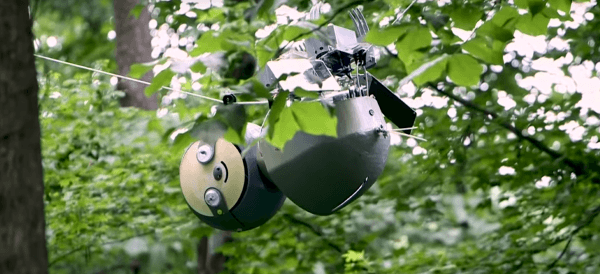For the next several months, visitors to the Atlanta Botanical Garden will be able to observe the testing of a new high-tech tool in the battle to save some of the world’s most endangered species. SlothBot, a slow-moving and energy-efficient robot that can linger in the trees to monitor animals, plants, and the environment below, will be tested near the Garden’s popular Canopy Walk.
Built by robotics engineers at the Georgia Institute of Technology to take advantage of the low-energy lifestyle of real sloths, SlothBot demonstrates how being slow can be ideal for certain applications. Powered by solar panels and using innovative power management technology, SlothBot moves along a cable strung between two large trees as it monitors temperature, weather, carbon dioxide levels, and other information in the Garden’s 30-acre midtown Atlanta forest.
“SlothBot embraces slowness as a design principle,” said Magnus Egerstedt, professor and Steve W. Chaddick School Chair in the Georgia Tech School of Electrical and Computer Engineering. “That’s not how robots are typically designed today, but being slow and hyper-energy efficient will allow SlothBot to linger in the environment to observe things we can only see by being present continuously for months, or even years.”
About three feet long, SlothBot’s whimsical 3D-printed shell helps protect its motors, gearing, batteries, and sensing equipment from the weather. The robot is programmed to move only when necessary, and will locate sunlight when its batteries need recharging. At the Atlanta Botanical Garden, SlothBot will operate on a single 100-foot cable, but in larger environmental applications, it will be able to switch from cable to cable to cover more territory.
Continue reading at Georgia Tech.
Image via Georgia Tech.


